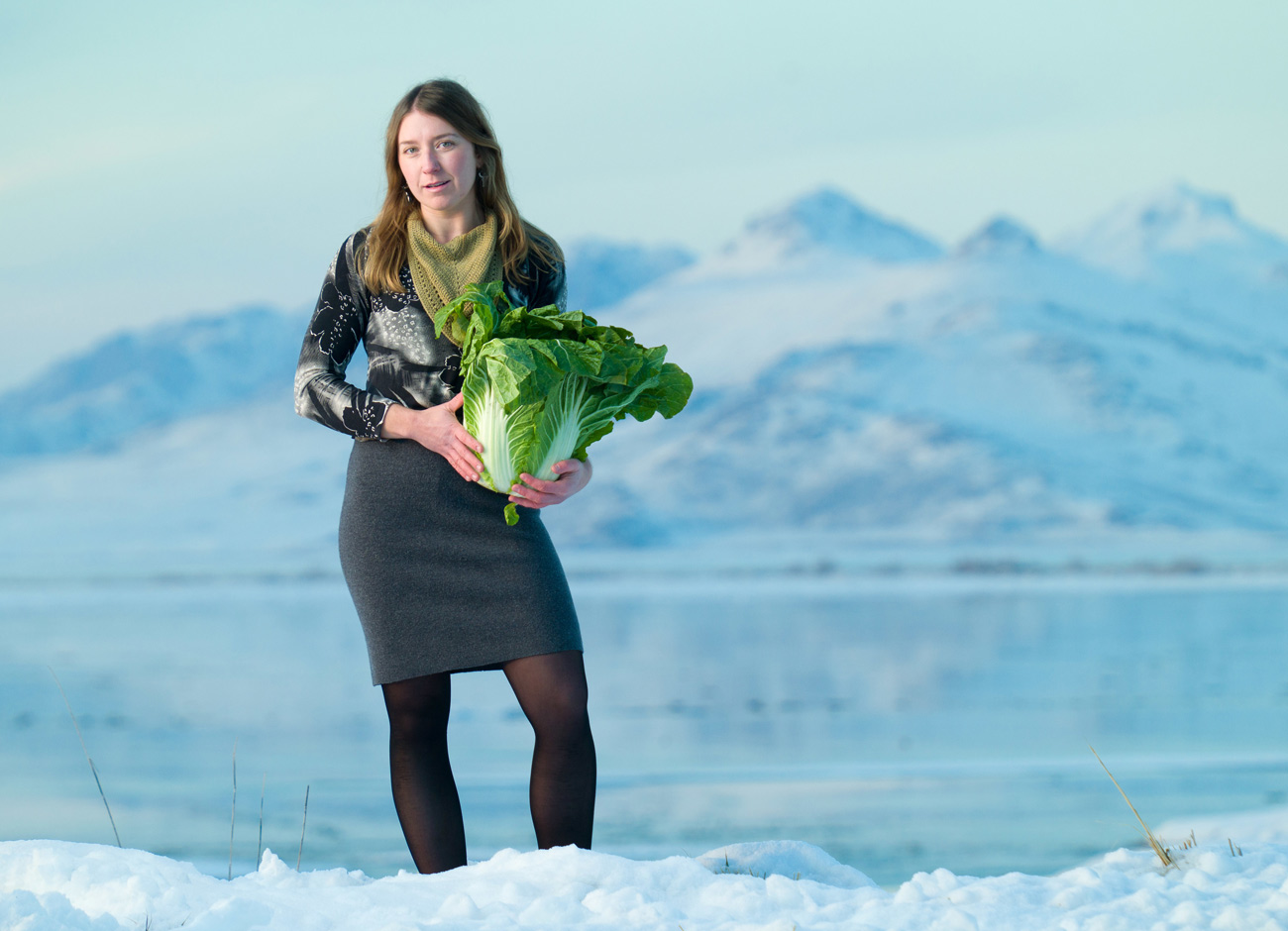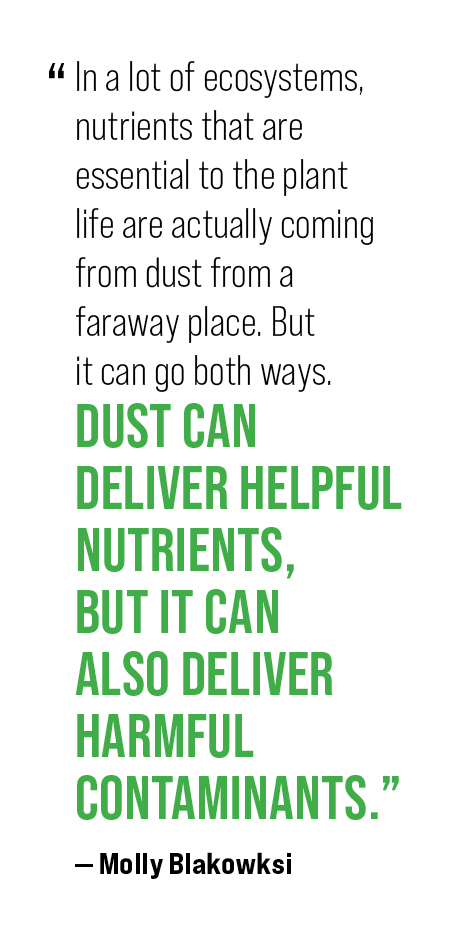Toxic Dust: A Growing Problem

The desiccation of Great Salt Lake is obvious, particularly from the air.
The shoreline of the western world’s largest saline lake appears to stretch for miles beyond where it should be. What is less apparent is the potential harm carried in the wind from the dusty lakebed.

Molly Blakowski, a doctoral student in watershed sciences at Utah State University, wants to determine which heavy metals and contaminants hitch a ride on dust particles blown from Great Salt Lake and how they may affect the people and ecosystems downwind.
“The fact all of these pollutants have been accumulating in the lakebed sediments over the past century and beyond was not a big threat to us when the sediments were all covered by water,” she explains. “It’s now a more imminent threat because of the potential to blow back in our faces.”
As water from Great Salt Lake disappears, it leaves behind a crust vulnerable to erosion by wind, and the particles once trapped underneath can be lofted into the atmosphere. Blakowski aims to understand the consequences when heavy metals and pollutants bind to dust particles and coat the plants and soils where we grow our food.
“In a lot of ecosystems, nutrients that are essential to the plant life are actually coming from dust from a faraway place,” she explains. “But it can go both ways. Dust can deliver helpful nutrients, but it can also deliver harmful contaminants.”
Blakowski and Jeffrey Perala-Dewey, a Ph.D. student in chemistry at USU, spent the last three years monitoring dust from five sites along Farmington Bay. They have detected arsenic, lead, copper, zinc, and cadmium, as well as polychlorinated biphenyls (PCBs), pesticides, and cyanotoxins. Alarmingly, they also found dust emissions have increased every year since 2019.

“We have seen with our own eyes that the protective mineral crust covering the lakebed sediment is breaking down, in some areas really significantly,” Blakowski says. “Pretty big changes can happen in a pretty short amount of time.”
As more lakebed is exposed, more dust can be expected — and with severe effects. Dust accelerates the melting of snow and ice, which threatens mountain snowpack and Utah’s drinking water supply. But what if it also affects our food?
Blakowski recently simulated the frequency of dust storms from Great Salt Lake during a typical growing season, applying dust to the roots of some greenhouse cabbages and to the leaves of others. Afterwards she processed the cabbage to mimic human digestion and and will soon analyze their chemical compositions to test the proportion of heavy metals that could be consumed from contaminated garden vegetables.
“I do expect that the plants exposed to dust will have higher concentrations of heavy metals,” she admits.
But how much is not yet clear. The experiment is personal for Blakowski, who, like many Utahns, gardens. And she worries that an activity considered healthy and productive may not hold as many benefits as once thought. She likens the state of Great Salt Lake to putting “water on a hot frying pan on a burner.
Nevertheless, Blakowski remains optimistic about the lake’s future because of work by the state legislature and because the primary reason the lake is threatened is due to human demands on it, she says. “We have some of the highest water use in the country. … Because the problem is so human caused I think it can be also more likely to be human solved.”
By Kristen Munson
Photos by Levi Sim






